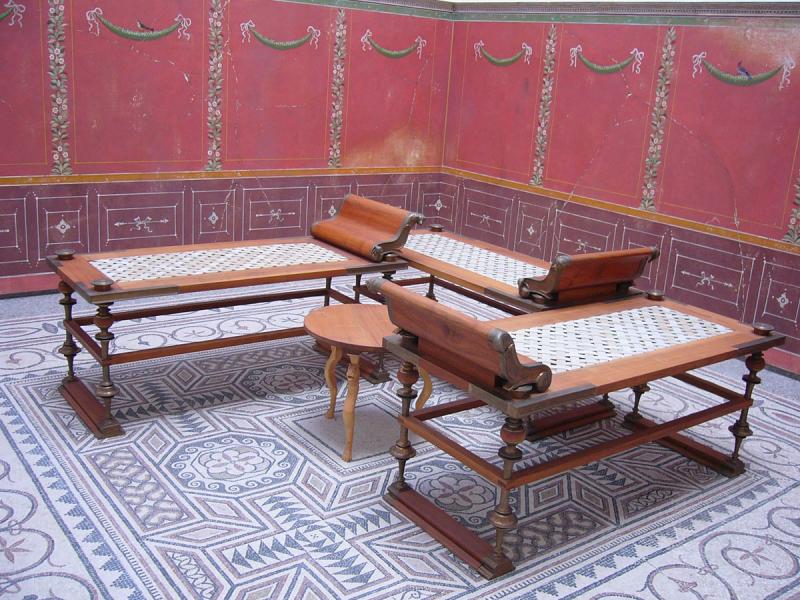Entertainment and the Ancient Interior
 Public and private entertainments enjoyed by Greeks and Romans—musical recitals, theatrical performances and athletic games—were so pleasurable that a vast range of images was created to recall the experience. The exhibition displays just a few examples of this rich corpus made between the fifth century BCE and fourth century CE. Mosaic floor pavements, architectural elements, and mobile tokens such as a miniature lamp in the form of a mask and a wine krater, infused the domestic sphere with memories of intimate drinking parties or thrilling mass spectacles. From the mid-5th century BCE, the very years when plays by the great dramatic poets Aeschylus, Sophocles, and Euripides were being performed in Athens, individuals began to have the walls of their home painted to simulate the theater. By the late Roman republic in first-century BCE Italy, decorated interiors adapted a vernacular of public, theatrical spectacle for the domestic sphere, presenting playful juxtapositions of elements and blending the real and the fantastical.
Public and private entertainments enjoyed by Greeks and Romans—musical recitals, theatrical performances and athletic games—were so pleasurable that a vast range of images was created to recall the experience. The exhibition displays just a few examples of this rich corpus made between the fifth century BCE and fourth century CE. Mosaic floor pavements, architectural elements, and mobile tokens such as a miniature lamp in the form of a mask and a wine krater, infused the domestic sphere with memories of intimate drinking parties or thrilling mass spectacles. From the mid-5th century BCE, the very years when plays by the great dramatic poets Aeschylus, Sophocles, and Euripides were being performed in Athens, individuals began to have the walls of their home painted to simulate the theater. By the late Roman republic in first-century BCE Italy, decorated interiors adapted a vernacular of public, theatrical spectacle for the domestic sphere, presenting playful juxtapositions of elements and blending the real and the fantastical.
In ancient Greece, the pinnacle of elite entertainment for educated men was the symposium, an after-dinner social gathering at which they drank and conversed. Alongside games and erudite conversations, music played a central role in these events. They began with the libation melody in respect for the gods and continued throughout the evening with solo songs and recitations.
The format of the Roman triclinium, or dining room, was modeled after the Greek symposium, with pillowed couches lining three of the four walls. Men, women, and even children—seated by order of importance—could recline in comfort as household servants provided food and entertainment. The elaborate decorations and frescoes that adorned the walls demonstrate the significance of this space within the Roman household.
Image caption: Reproduction of a triclinium, Archäologische Staatssammlung, Munich. Photograph courtesy of Wikimedia Commons.

 Earlier
Earlier Earlier
Earlier









